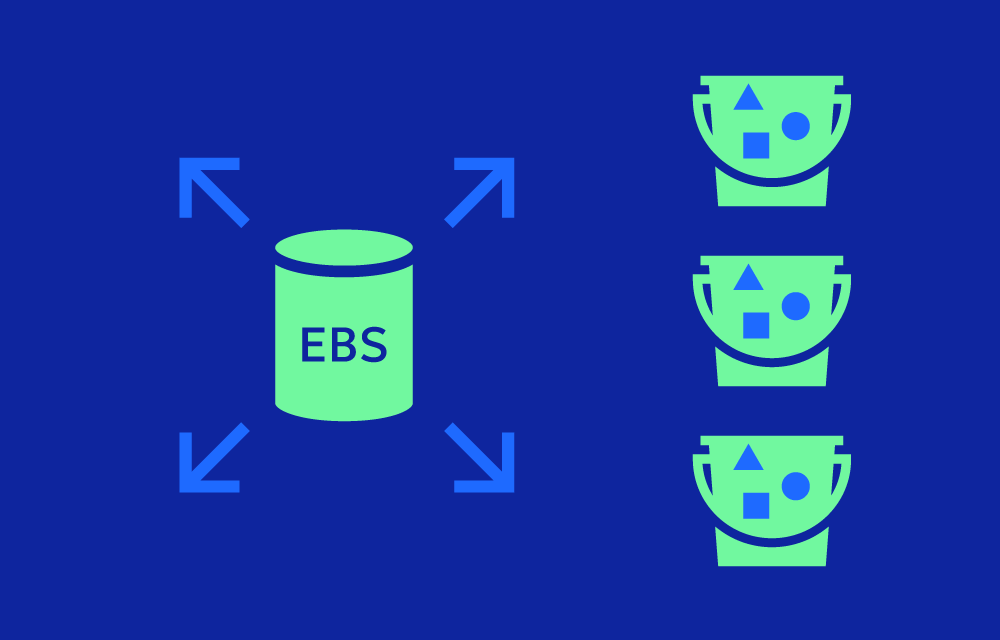Launch year
Amazon Web Services (AWS) introduced EBS in 2008 as a persistent storage solution for EC2 instances. EBS Snapshots were subsequently added to provide users with a simple way to back up and restore their data. Over time, AWS has enhanced the snapshot service, introducing features like incremental snapshots, which only store the changes made since the last snapshot, and cross-region snapshots for disaster recovery.
Value Proposition
EBS Snapshots offer a reliable and cost-effective method for backing up data in the cloud. By storing snapshots incrementally, users can minimize storage costs while ensuring data durability. Additionally, snapshots can be easily shared between AWS accounts and regions, facilitating data migration and disaster recovery planning.
Challenges
Managing EBS Snapshots can be complex, especially in environments with a large number of volumes. Challenges include ensuring consistent backups, managing snapshot lifecycles, and controlling storage costs. Without proper governance, snapshots can quickly accumulate, leading to unnecessary expenses.
Key Features
- Incremental Backups: Only the data changed since the last snapshot is saved, reducing storage costs.
- Automated Lifecycle Management: Users can automate the creation, retention, and deletion of snapshots using AWS Data Lifecycle Manager (DLM).
- Cross-Region and Cross-Account Copying: Snapshots can be copied across regions and accounts, supporting disaster recovery and data sharing.
- Fast Snapshot Restore (FSR): Allows for quick recovery of data by enabling snapshots to be restored in seconds.
Types of EBS Snapshots
- Manual Snapshots: Created by the user through the AWS Management Console, CLI, or API.
- Automated Snapshots: Created automatically according to policies set by the user, often through AWS DLM.
Market
EBS Snapshots are widely used across industries for backup, recovery, and migration of data. They are integral to cloud-based disaster recovery strategies and are commonly employed in sectors such as finance, healthcare, and technology.
List of Cloud Service Providers Offering Similar Services
- Google Cloud Persistent Disk Snapshots: Google Cloud’s equivalent to EBS Snapshots, offering incremental backups and cross-region replication.
- Azure Managed Disks Snapshots: Microsoft’s solution for creating point-in-time backups of Azure Managed Disks.
Similar Concepts
- EBS Volume: The storage unit from which an EBS Snapshot is created.
- AMI (Amazon Machine Image): A pre-configured virtual machine image that can include one or more EBS Snapshots.
See Also
Further Reading
- AWS Whitepaper: Best Practices for Amazon EBS Snapshots
EBS snapshot FAQ
What is the difference between an EBS Snapshot and a backup?
An EBS Snapshot is a point-in-time copy of an EBS volume, capturing only the changes made since the last snapshot (incremental backup). In contrast, a backup typically refers to a broader process that may involve multiple snapshots or copies of data, stored across different locations or formats. While EBS Snapshots are specific to AWS and EBS volumes, backups can involve other types of storage and cloud providers.
What is the difference between a snapshot and a volume?
An EBS Volume is a virtual disk attached to an EC2 instance, used for storing data. A snapshot is a copy of this volume taken at a specific point in time. While the volume is the active storage unit, the snapshot is a static image of that storage, which can be used to create new volumes or restore data to an existing one.
How do I access an EBS Snapshot?
You can access an EBS Snapshot through the AWS Management Console, CLI, or API. In the Management Console, navigate to the EC2 Dashboard, select Snapshots under the Elastic Block Store section, and you’ll see a list of all your snapshots. From there, you can create new volumes, share snapshots with other AWS accounts, or copy them to different regions.



